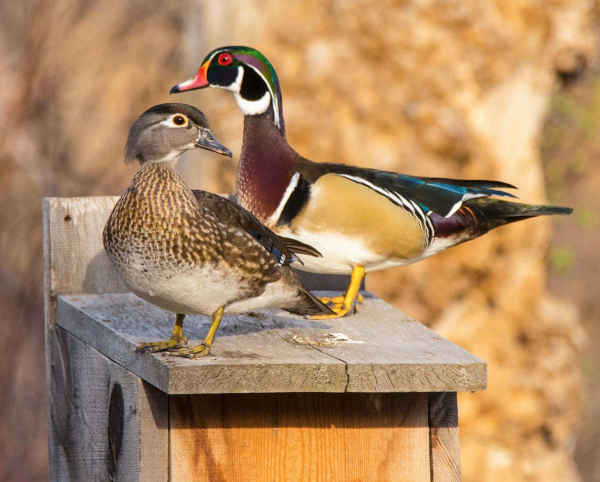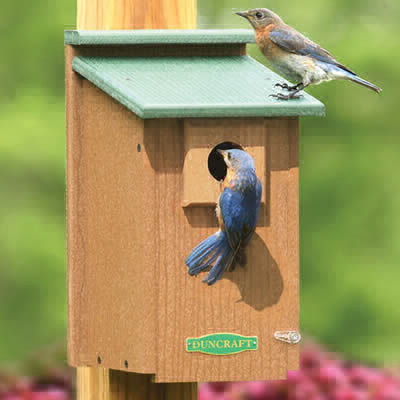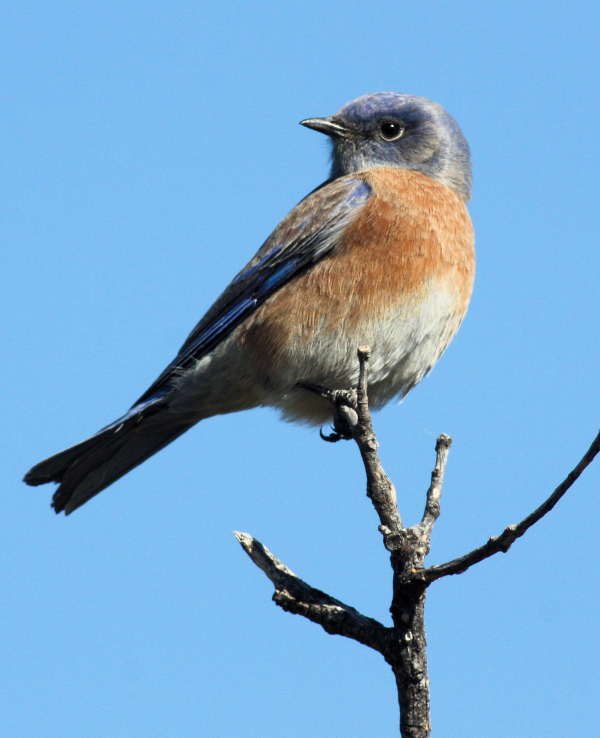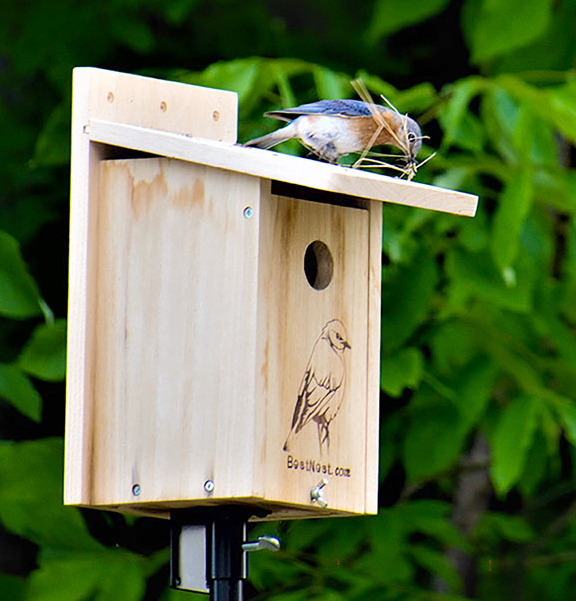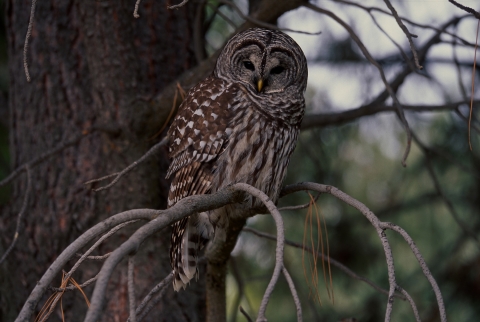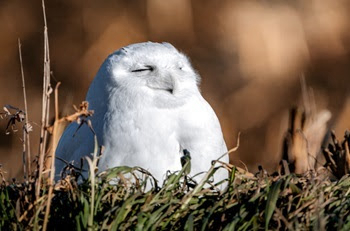It’s Time for Big Nest Boxes
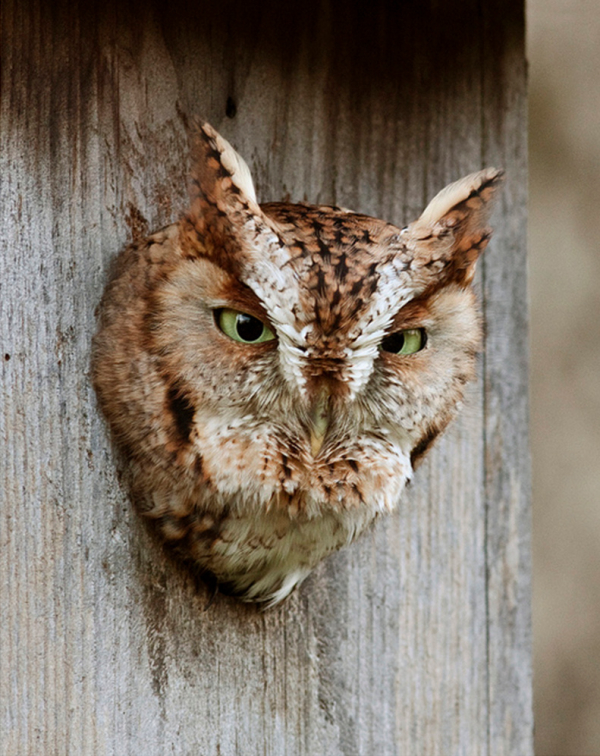
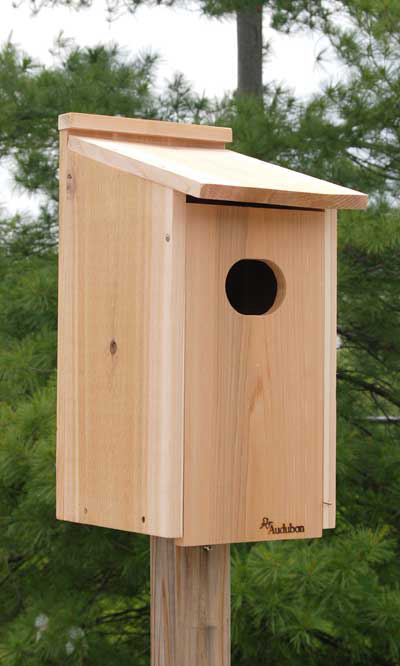
It’s time to get started early to attract cavity nesting birds like owls, ducks, and kestrels to big nest boxes, to benefit these birds with the best and safest possible nesting sites. Whether you plan to build a big nest box, or a number of them; or if you plan to buy a big nest box, now’s the time to follow through on your plans. Maybe you already have a big nest box or two installed on your property or at another site, or maybe this article will provide some inspiration for you to add a big nest box to your property to try to attract a nesting pair of owls, kestrels, or ducks.
Installing a big nest box is among the highest levels of dedication for any birder to accomplish, for it provides a much-needed enhancement for the welfare of the 2021 nesting season – and for years to come. The larger cavity nesting birds – owls, ducks, and kestrels – primarily rely on large natural holes in tree trunks and large cavities in branches, but these are not always safe from predators like raccoons and tree squirrels. Good nesting cavities are few and far between, and are obvious limiting factors for birds interested in nesting in a given area – there’s a lot of competition for limited existing nesting cavities.
Therefore, birders can – and do – provide auxiliary nesting sites in the form of “big nest boxes,” oversized bird houses that are better and safer than most available natural cavities. Plus, big nest boxes provide off-season roosting sites for owls, which makes any big nest box doubly valuable – and a super addition to your yard or property. And much of the fun is that you never know how the interesting birds that a big nest box attracts will enhance your birding experiences. Gosh, who wouldn’t enjoy monitoring screech owls, a nesting Wood Duck, or the activities of a pair of American Kestrels raising a brood of mini-falcons in a big nest box that you provide.
Lots of Small Owls – Depending on where you live, you may be able to attract a couple different species of owls to a big nest box, which may be added incentive to add more than one big nest box. Foremost are the screech owls, Eastern and Western Screech Owls; then there are Northern Saw-whet Owls, Northern Pygmy Owls, Ferruginous Pygmy Owls, and if you’re in the Southwest, you may be in Elf Owl range, and to have a pair of Elf Owls use one of your big nest boxes would be quite a feather in your cap!
Two Larger Owls – There are a couple larger owls that can be attracted to even bigger nest boxes, but there are some impressive stories behind attracting Barred Owls and Barn Owls, and we will share more about these larger owls below.
Lots of Ducks – We usually don’t think about ducks nesting in bird houses, but there are some prized species of ducks that are cavity nesters that use big nest boxes: Wood Ducks are the most popular, but Hooded Mergansers, Common Goldeneyes, and Buffleheads are also cavity nesting birds that use big nest boxes within their nesting ranges.
Kestrels – Who wouldn’t love to have their own pair of nesting falcons? American Kestrels are highly prized birds to observe in the wild, and you can lure them to rural locations with a big nest box to study their nesting activities while benefitting them with a safe nesting site.
Range and Habitat are Key – To attract a certain species of birds, you obviously must be within the nesting range of that species. But just as important is to install the nest box in or near prime habitat for the species. Perhaps a nest box positioned at the edge of an open woodland bordering a grassy meadow will entice a small owl or kestrel. Of course, access to water will be key to attract a nesting duck. You can get all pertinent information about these requirements, along with what elevation is best for a given species at https://nestwatch.org/learn/all-about-birdhouses/
Interchangeable Big Nest Boxes – One thing that might surprise you is that some big nest boxes can be utilized by a variety of birds (but not at the same time). For example, screech owls or kestrels will use a nest box designed for a Wood Duck or Hooded Merganser. However, the same is not true for the ducks using owl and kestrel nest boxes, because the entrance hole is smaller (3 inches) than that used for Wood Ducks (4 inches). The key to building or buying the right nest box for the birds you wish to attract comes down to the entrance hole size, although there are several species-specific plans to learn about, which are outlined at the NestWatch website.
Building a Big Nest Box – To learn specifics about the best design, entrance hole size, materials, elevation, preferred habitats, and other factors that enter into building and installing a big nest box for the species of your choice, The Cornel Lab of Ornithology’s NestWatch webpages provide a wealth of information and guidance at https://nestwatch.org/learn/all-about-birdhouses/ (scroll down toward the bottom of the page to review birds’ nest box information) and for basic building information, see https://nestwatch.org/learn/all-about-birdhouses/features-of-a-good-birdhouse/
Buying a Big Nest Box – Your best bet for buying a quality big nest box is to shop at BestNest. For owl and kestrel nest boxes, see https://www.bestnest.com/bestnest/owl_houses.asp (you will also find a Barred Owl nest box and a Barn Owl nest box among the selection). For Wood Duck nest boxes, see https://www.bestnest.com/bestnest/duck_houses.asp and at the same time, you will want to consult the NestWatch webpages to learn more about planning and installing your big nest box at https://nestwatch.org/learn/all-about-birdhouses/
Even Bigger Nest Boxes – These days, some farmers and other land owners have attracted Barn Owls to their fields by installing bigger nest boxes designed especially for these impressive rodent predators. (The same is true for smaller owls too, especially where mice and vole populations create problems.) The use of big nest boxes by farmers is testimony to the chances of attracting owls to your property too.
Patience and Luck – Attracting larger cavity nesting birds – owls, ducks, and kestrels – takes patience and luck – lots of patience and lots of luck, along with the right nest box installed in the right habitat.
A Classic Example of a Successful Bigger Nest Box – The ultimate example of patience being rewarded must be the story of Jim Carpenter, the founder and CEO of Wild Birds Unlimited, who built and installed a really big nest box for Barred Owls in his wooded backyard in 1998. It took 8 years for a pair of Barred Owls to eventually utilize the nest box, but it’s been used each spring ever since – well worth the effort, and the wait!
Each Spring, Jim shares the action at his big Barred Owl nest box via a live-feed on the WBU website, using 2 high-resolution live-feed cameras – one inside the nest box, and one outside the giant bird house, focused on the entrance of the nest box and surrounding area. Both cameras should be activated about the first week of March, but until then, you can see many interesting related information on the webpage at https://www.wbu.com/owl-cam/
Historic Highlights – You can also enjoy highlights at the Barred Owl nest box from 2019 at https://www.wbu.com/owl-cam-highlights/ as well as some background information about the big nest box including steps in the building and installation process at https://www.wbu.com/owl-box-history/
You never though, you may get lucky and attract an owl, duck, or kestrel to your big nest boxes the first spring, to the benefit these birds by providing the best and safest possible nesting sites, which are scarce in nature. Big nest boxes are extreme backyard equipment, but they can be the most fulfilling too – for us, and the birds.

